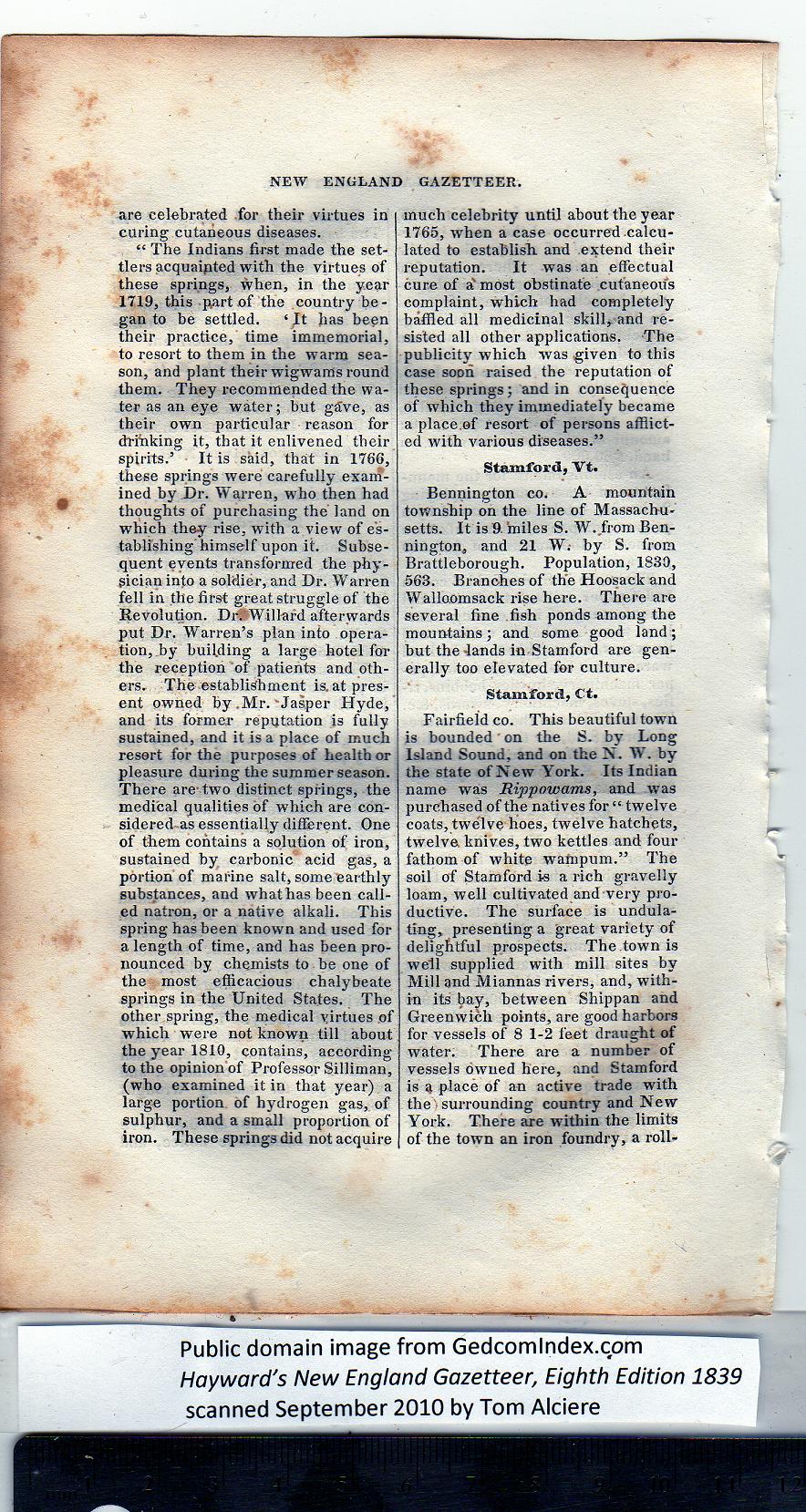|
are celebrated for their virtues in
curing cutaneous diseases.
“ The Indians first made the set-
tlers acquainted with the virtues of
these springs, when, in the year
1719, this pnrtof the country be-
gan to be settled. ‘ It has been
their practice, time immemorial,
to resort to them in the warm sea-
son, and plant their wigwams round
them. They recommended the wa-
ter as an eye water; hut gave, as
their own particular reason for
drinking it, that it enlivened their
spirits.’ It is said, that in 1766,
these springs were carefully exam-
ined by I)r. Warren, who then had
thoughts of purchasing the land on
which they rise, with a view of es-
tablishing himself upon it. Subse-
quent events transformed the phy-
sician into a soldier, and Dr. Warren
fell in the first great struggle of the
Revolution. DrJWillard afterwards
put Dr. Warren’s plan into opera-
tion,.by building a large hotel for
the reception of patients and oth-
ers. The establishment ia at pres-
ent owned by .Mr.'Jasper Hyde,
and its former reputation is fully
sustained, and it is a place of much
resort for the purposes of health or
pleasure during the summer season.
There are-two distinct springs, the
medical qualities of which are con-
sideredas essentially different. One
of them contains a solution of iron,
sustained by carbonic acid gas, a
portion of marine salt, some earthly
substances, and what has been call-
ed natron, or a native alkali. This
spring has been known and used for
a length of time, and has been pro-
nounced by chemists to be one of
the most efficacious chalybeate
springs in the United States. The
other spring, the medical virtues of
which were not known till about
the year 1810, contains, according
to the opinion of Professor Silliman,
(who examined it in that year) a
large portion of hydrogen gas, of
sulphur, and a small proportion of
iron. These springs did not acquire
much celebrity until about the year
1765, when a case occurred calcu-
lated to establish and extend their
reputation. It was an effectual
cure of a' most obstinate cutaneous
complaint, which had completely
baffled all medicinal skill, and re-
sisted all other applications. The
publicity which was given to this
case soon raised the reputation of
these springs; and in consequence
of which they immediately became
a place.of resort of persons afflict-
ed with various diseases.” |
Stamford, Vt.
Bennington co. A mountain
township on the line of Massachu-
setts. It is 9. miles S. W./rom Ben-
nington, and 21 W. by S. from
Brattieborough. Population, 1830,
563. Branches of the Hoosack and
Wallo.omsack rise here. There are
several fine fish ponds among the
mountains; and some good land;
but the dands in Stamford are gen-
erally too elevated for culture.
Stamford, Ct.
Fairfield co. This beautiful town
is bounded on the S. by Long
Island Sound, and on the N. W. by
the state of New York. Its Indian
name was Rippowams, and was
purchased of the natives for “ twelve
coats, twe'lve hoes, twelve hatchets,
twelve, knives, two kettles and four
fathom of white wampum.” The
soil of Stamford is a rich gravelly
loam, well cultivated and very pro-
ductive. The surface is undula-
ting, presenting a great variety of
delightful prospects. The .town is
well supplied with mill sites by
Mill and Miannas rivers, and, with-
in its bay, between Shippan and
Greenwich points, are good harbors
for vessels of 8 1-2 feet draught of
water. There are a number of
vessels owned here, and Stamford
is a place of an active trade with
the surrounding country and New
York. There are within the limits
of the town an iron foundry, a roll- |
